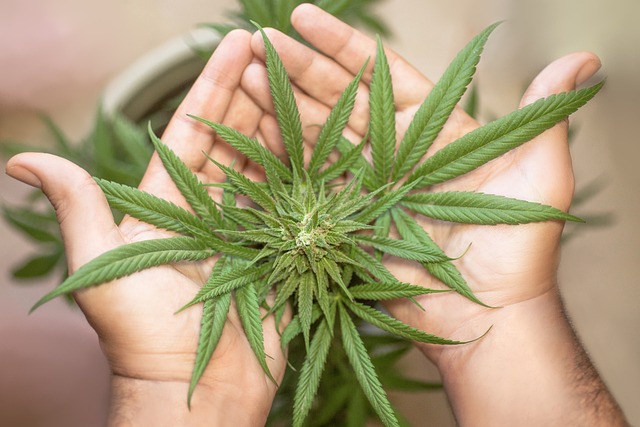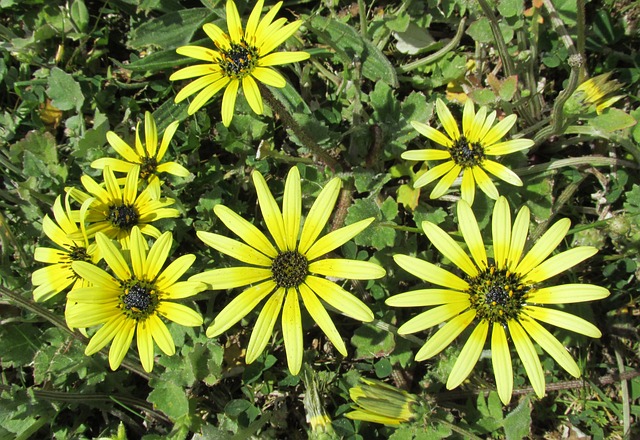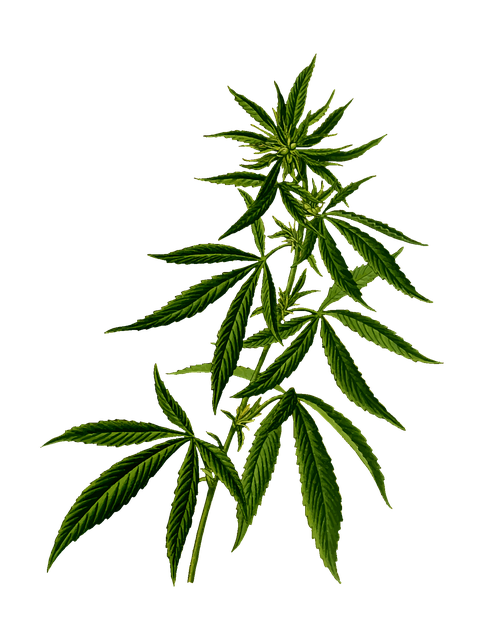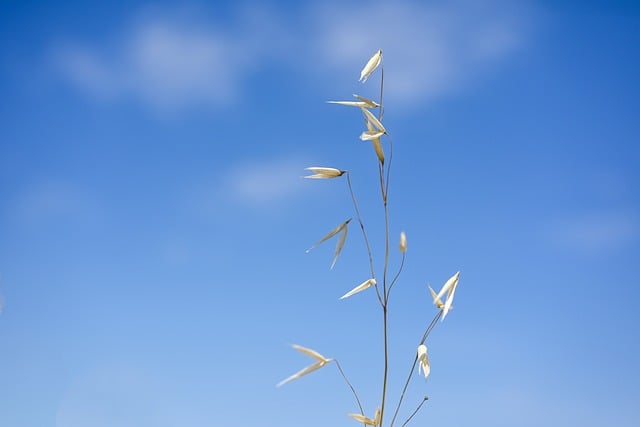The THCA flower, a non-psychoactive form of THC found in cannabis, has emerged as a significant wellness component due to its potential health benefits and unique chemical composition. Unlike its psychoactive form, Delta-9-THC, THCA offers therapeutic effects without intoxication. Enriched with high levels of CBD and various beneficial terpenes, the THCA flower leverages the entourage effect, a phenomenon where the combined action of these compounds may enhance health benefits more effectively than they would alone. The presence of CBD, known for its calming and anti-inflammatory properties, complements THCA’s potential analgesic effects, offering a balanced therapeutic experience. Terpenes like myrcene further enrich the THCA flower’s therapeutic profile, potentially heightening its efficacy in managing stress, anxiety, and pain. As research continues to underscore these advantages, the integration of THCA flower into wellness regimens is recognized as an effective natural approach for maintaining health and wellbeing, alongside CBD and terpenes. The optimal cultivation of high-quality THCA flowers involves selecting the right strain with a balanced profile of CBD and terpenes, nurturing the plants carefully to maximize potency, and understanding the intricate interactions within cannabis that contribute to the entourage effect for an enhanced therapeutic experience.
Explore the transformative properties of THCA flower, a cannabinoid-rich plant offering unique benefits distinct from its counterpart, CBD. Our comprehensive article delves into the advantages of THCA, comparing it to CBD while highlighting the nuanced role of terpenes in amplifying its effects. Gain insights into cultivation techniques for nurturing high-quality THCA flowers and understand the synergistic action within the entourage effect, shedding light on the collaborative benefits between THCA, CBD, and terpenes. Discover how these compounds contribute to the therapeutic potential of flower THCA, a subject of growing interest in the realm of wellness.
- Unveiling the Potential of THCA Flower: A Deep Dive into Its Benefits
- THCA Flower vs. CBD: Understanding the Differences and Similarities
- The Role of Terpenes in Enhancing the Effects of THCA Flower
- Cultivation Excellence: Tips for Growing High-Quality THCA Flowers
- Decoding the Entourage Effect: How THCA, CBD, and Terpenes Work Together
- Exploring the Therapeutic Properties of THCA Flower and Its Synergistic Compounds
Unveiling the Potential of THCA Flower: A Deep Dive into Its Benefits

The THCA flower, a precursor to THC (tetrahydrocannabinol), has garnered attention within the cannabis community for its potential wellness benefits and unique chemical profile. Unlike its psychoactive counterpart THC, THCA is non-intoxicating, allowing consumers to experience the therapeutic effects without the traditional ‘high’. This makes it particularly appealing for those seeking relief during the day or for those who are sensitive to psychoactive effects. Rich in CBD (cannabidiol) and an array of beneficial terpenes, THCA flower offers a comprehensive entourage effect, where the combined synergy of these compounds may amplify the health benefits beyond what any single cannabinoid or terpene could provide alone.
CBD is well-known for its calming and anti-inflammatory properties, making it a popular choice for individuals looking to manage stress, anxiety, and pain. When combined with THCA in the flower form, the two cannabinoids work in tandem to create a balanced effect that can be more effective than using either compound in isolation. Additionally, the presence of terpenes like myrcene, which is known for its analgesic and sedative effects, further contributes to the therapeutic potential of THCA flower. This synergy is not just about the sum of its parts; it’s a complex interaction that may lead to improved efficacy in addressing various health conditions without intoxication. As research continues to evolve, the benefits of incorporating THCA flower into wellness routines become increasingly clear, offering a promising alternative for those seeking natural relief.
THCA Flower vs. CBD: Understanding the Differences and Similarities

THCA flower, rich in tetrahydrocannabinolic acid (THCA), is a non-psychoactive cannabinoid found abundantly in raw cannabis plants. Unlike its heated counterpart, Delta-9-THC, THCA exhibits distinct properties and effects. When exposed to heat or light, THCA undergoes decarboxylation, transforming into the more commonly known psychoactive compound, Delta-9-THC. This process alters the cannabinoid’s interaction with the body’s endocannabinoid system, affecting its potential therapeutic benefits and experiences.
On the other hand, CBD, or cannabidiol, is another significant cannabinoid that has gained widespread attention for its wellness properties. Unlike THCA, CBD is non-psychoactive under all conditions. Both THCA flower and CBD possess their own unique terpene profiles, which contribute to the distinctive aromas, flavors, and effects associated with different cannabis strains. Terpenes also play a role in enhancing or modifying each cannabinoid’s effects when they interact synergistically, a phenomenon known as the entourage effect. While THCA flower may offer potential benefits related to pain relief, anti-inflammatory properties, and mood enhancement, CBD is often sought after for its calming effects, potential anti-anxiety qualities, and therapeutic applications in various health conditions. Understanding these differences and similarities is crucial for consumers looking to harness the specific benefits of each cannabinoid for their wellness routines.
The Role of Terpenes in Enhancing the Effects of THCA Flower

Delta-9-tetrahydrocannabinolic acid (THCA) is the non-psychoactive precursor to the well-known compound delta-9-tetrahydrocannabinol (THC), found abundantly in cannabis flowers. While THCA itself does not induce psychoactive effects, it holds potential therapeutic benefits and is gaining popularity in various wellness routines. The entourage effect, a phenomenon where the collective action of cannabinoids and terpenes enhances their individual effects, plays a significant role in the efficacy of THCA flower. Terpenes, the aromatic compounds responsible for the distinct scents and flavors of cannabis, are not only pivotal in defining the strain’s character but also interact with our body’s endocannabinoid system, influencing mood, pain sensation, and immune response.
Cannabidiol (CBD), another prominent cannabinoid found in hemp and cannabis plants, complements THCA by counterbalancing its potential psychoactive effects and offering a synergistic impact when consumed together. Terpenes like myrcene, limonene, and caryophyllene, commonly found in THCA flower, are known to have therapeutic properties of their own. Myrcene, for instance, is often associated with relaxing effects, while limonene has been studied for its potential mood-enhancing properties. These terpenes, alongside CBD, amplify the benefits of THCA flowers by working in concert, creating a more potent and nuanced therapeutic experience than any single compound could alone. Understanding the intricate relationship between THCA, CBD, and terpenes is crucial for consumers looking to harness the full potential of cannabis-based products. This synergy not only optimizes the effects sought but also promotes a holistic approach to health and wellness.
Cultivation Excellence: Tips for Growing High-Quality THCA Flowers

Cultivating high-quality THCA flowers requires meticulous attention to detail and an understanding of the plant’s specific needs. The journey from seedling to mature, THCA-rich flower begins with selecting a robust strain that boasts a favorable balance of CBD and terpenes. Optimal soil quality, rich in organic matter, provides a solid foundation for your plants, allowing them to absorb essential nutrients effectively. Ensuring ample sunlight exposure, particularly during the vegetative stage, is crucial for healthy growth and robust flower development.
Monitoring humidity and temperature levels is vital to maintain an environment that inhibits mold and pests while promoting trichome formation. These crystalline structures are where THCA, the precursor to THC, resides, alongside CBD and a symphony of terpenes that contribute to both the plant’s aromatic profile and its potential therapeutic effects. Flowering conditions should be carefully controlled to encourage the highest concentration of these valuable compounds. Regularly scheduled nutrient applications tailored to the life stage of your plants can further enhance the potency and quality of your THCA flowers. With diligent care and a patient approach, cultivators can achieve excellence in growing THCA flowers with exceptional CBD and terpene profiles.
Decoding the Entourage Effect: How THCA, CBD, and Terpenes Work Together

Decoding the synergistic interactions within cannabis, particularly the entourage effect, is pivotal for understanding its full spectrum of benefits. THCA flower, rich in tetrahydrocannabinolic acid (THCA), offers a promising starting point. THCA is the precursor to THC, the psychoactive component of cannabis, but in its raw form, it exerts subtle effects without intoxication. When consumed as part of a whole-plant extract or in its natural flower form, THCA interacts with the body’s endocannabinoid system, potentially offering therapeutic benefits.
Cannabidiol (CBD), another prominent compound found in cannabis, complements THCA’s effects by modulating various bodily functions without the high associated with THC. CBD is known for its calming and anti-inflammatory properties, which can enhance the wellness experience. Together with THCA, they form a balanced duo. However, it is the inclusion of terpenes that truly brings out the entourage effect’s full potential. Terpenes are aromatic compounds that give cannabis its distinct flavors and fragrances. These compounds also play a crucial role in the plant’s defense mechanisms and can influence the way THCA and CBD interact with receptors in the body, thereby amplifying or altering their effects. For instance, terpenes like myrcene are known for their sedative properties, which can enhance CBD’s calming effects. By understanding how THCA flower, CBD, and terpenes work in concert, users can harness the entourage effect to achieve a more beneficial and harmonious experience.
Exploring the Therapeutic Properties of THCA Flower and Its Synergistic Compounds

delta-9-tetrahydrocannabinolic acid (THCA) is the non-psychoactive precursor to the well-known cannabinoid THC, found abundantly in raw cannabis flowers. As researchers delve into its potential therapeutic properties, studies suggest that THCA may offer a range of health benefits without the psychoactive effects typically associated with its decarboxylated form. One of the key areas of interest is its anti-inflammatory and neuroprotective effects, which are believed to be beneficial for conditions like arthritis and neurodegenerative diseases.
The entourage effect, a concept that describes the synergistic interaction between cannabinoids, terpenes, and other components found in the cannabis plant, plays a crucial role in enhancing the therapeutic properties of THCA flower. When consumed alongside cannabidiol (CBD), another prominent non-psychoactive cannabinoid, and a full spectrum of terpenes, the efficacy of THCA is thought to be amplified. CBD is known for its own therapeutic attributes, including anti-anxiety and pain-relieving effects. Terpenes, the aromatic compounds that give cannabis its distinct scent and flavor, also contribute to the plant’s medicinal profile by influencing the way cannabinoids interact with our endocannabinoid system. This synergy not only enhances the potential health benefits but may also reduce potential side effects, making THCA flower a subject of growing interest in the natural wellness community.
THCA flower emerges as a multifaceted subject, rich in potential and nuanced in its effects when compared with CBD. The exploration of its therapeutic properties and the synergy of its components, including CBD and terpenes, offers a comprehensive understanding of its unique position within the cannabis landscape. Cultivators interested in producing high-quality THCA flowers can benefit from the cultivation tips provided, ensuring that both novice and experienced users can reap the advantages this natural wonder has to offer. As legal landscapes evolve, the significance of THCA flower, CBD, and terpenes in health and wellness continues to unfold, promising a future where their combined benefits are fully realized and harnessed for therapeutic use.
